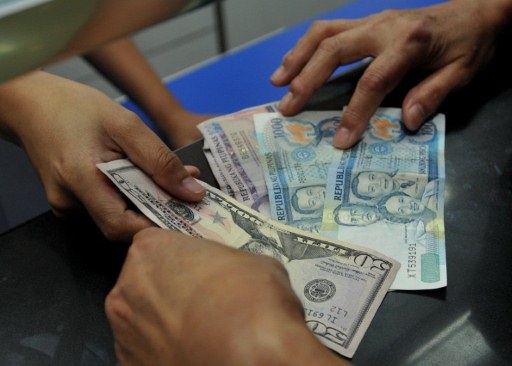
(File photo from Philippine Daily Inquirer)
The national government’s debt stock further swelled to another new record-high P6.821 trillion in February partly as the peso further weakened against the US dollar that month.
The latest Bureau of the Treasury data released Wednesday showed that the government’s outstanding obligations inched up by 1.4 percent from January’s P6.726 trillion as well as increased by a faster 9.9 percent from P6.208 trillion in February last year.
As the government still relies heavily on borrowing from local sources mainly through the sale of treasury bills and bonds amid relatively lower yields, the share of domestic debt to the end-February total remained bigger at 64.9 percent.
Domestic obligations declined by 0.02 percent month-on-month to P4.429 trillion “due to the net redemption of government securities amounting to P1.28 billion which were partially tempered by peso depreciation that increased the value of onshore dollar bonds by P360 million,” the Treasury explained in a statement.
The peso depreciated to 52.07:$1 at end-February from 51.341 to the greenback in January, the Treasury noted.
The weaker peso had been mostly blamed on market concerns on the current account deficit, which the Bangko Sentral ng Pilipinas reported last month swung to $2.5 billion in 2017, the biggest since 1999.
Year-on-year, however, local debt jumped 11.2 percent from P3.985 trillion in February last year.
A similar 11.2-percent year-on-year climb in outstanding government securities to P4.428 trillion was posted as of February.
The Treasury has been raising its domestic borrowing program during the recent past quarters to fund the growing national budget as well as finance the government’s ambitious “Build, Build, Build” infrastructure program.
For instance, during its first 18 months in office, the Duterte administration already embarked on three retail treasury bond (RTB) issuances not only to cater to small investors but also to raise money for massive infrastructure projects, which would be mostly financed by the budget.
This week, the Treasury announced that it had programmed to sell P325 billion in government securities from April to June, a bigger volume than the first-quarter domestic borrowing program of P240 billion, with smaller weekly offerings to make them more appealing to investors.
As for the national government’s foreign debt, these grew 4.2 percent month-on-month and 7.6 percent year-on-year to P2.391 trillion at end-February.
“The growth in external debt was driven by net availments on foreign loans and bond issuance as well as forex fluctuations. The peso depreciation and third-currency appreciation raised the value of the US dollar and third-currency denominated debt by P32.59 billion and P4.76 billion, respectively,” the Treasury said.
“Net availments on foreign loans and bond issuance for the month added P58.14 billion,” according to the Treasury.
Last December, the Cabinet-level Development Budget Coordination Committee raised to 26 percent of total the share of external borrowings in 2018 from 20 percent previously, in line with the then planned dollar, panda and samurai bond offerings for this year.
In January, the Philippines sold a total of $2 billion in 10-year dollar-denominated global bonds at a coupon rate of 3 percent.
This month, 1.46 billion renminbi or almost P12 billion in three-year panda bonds were issued in China at 5 percent.
The government also wanted to sell between $500 million and $700 million in yen-denominated samurai bonds in Japan before yearend. /jpv